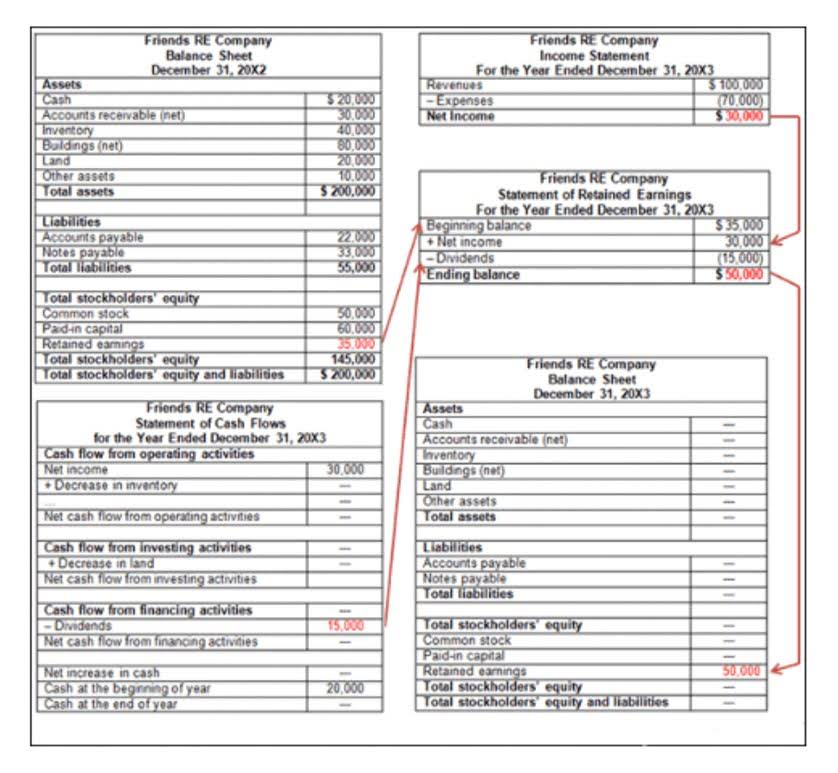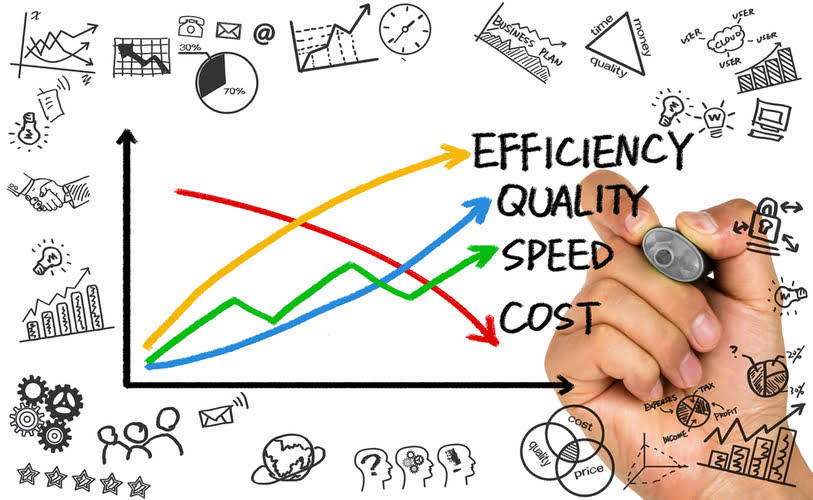These types of expenses are called fixed costs, and this is where Operating Leverage comes from. As it pertains to small businesses, it refers to the degree of increase in costs relative to the degree of increase in sales. After calculating the leverage by applying the formula, if the result is equal to 1, then the operating leverage indicates that there are no fixed costs, and the total cost is variable in nature.
Final Thoughts: Operating Leverage Can Help You Predict Changes in Profit
The business does not, however, have to bear significant fixed expenditures. A low DOL typically means the company has higher variable expenses than fixed costs. Due to the high percentage of fixed expenditures in an organization with high operating Leverage, a significant increase in sales may result in outsized changes in profitability. Therefore, the company’s degree of operating leverage can be calculated as 4.01x based on the given information. In 2018, the company reported $75.0 million vis-à-vis revenue of $65.0 in 2017. The company’s EBIT also increased to $30.0 million in 2018 vis-à-vis $27.0 million in 2017.
Operating Leverage Formula 2: % Change in Operating Income / % Change in Sales
- When a restaurant sells more food, it must first purchase more ingredients.
- While operating leverage doesn’t tell the whole story, it certainly can help.
- Financial Leverage causes financial risk, whereas operating Leverage causes company risk.
- After its fixed development costs were recovered, each additional sale was almost pure profit.
- The degree of operating leverage calculator is a tool that calculates a multiple that rates how much income can change as a consequence of a change in sales.
Therefore, poor managerial decisions can affect a firm’s operating level by leading to lower sales revenues. A business with low operating Leverage incurs a high percentage of variable costs, which results in a lower profit margin on each sale but less need for sales growth to offset its lower fixed costs. At the same time, a company’s prices, product mix and cost of inventory and raw materials are all subject to change. Without a good understanding of the company’s inner workings, it is difficult to get a truly accurate measure of the DOL. While this is riskier, it does mean that every sale made after the break-even point will generate a higher contribution to profit.
Operating leverage vs. financial leverage
One measure that doesn’t get enough attention, though, is operating leverage, which captures the relationship between a company’s fixed and variable costs. Operating leverage is a cost-accounting formula (a financial ratio) that measures the degree to which a firm or project can increase operating income by increasing revenue. A business that generates sales with a high gross margin and low variable costs has high operating leverage. In the base case, the ratio between the fixed costs and the variable costs is 4.0x ($100mm ÷ $25mm), while the DOL is 1.8x – which we calculated by dividing the contribution margin by the operating margin. A high degree of operating leverage indicates that the majority of your expenses are fixed expenses. Though high leverage is often viewed favorably, it can be more difficult to reach a break-even point and ultimately generate profit because fixed costs remain the same whether sales increase or decrease.
Degree of Operating Leverage Formula Calculator
Ltd. in order to illustrate the concept of operating leverage for a real-life company. Based on the given information, calculate the operating leverage of Samsung Electronics Co. Although you need to be careful when looking at operating leverage, it can tell you a lot about a company and its future profitability, and the level of risk it offers to investors. While operating leverage doesn’t tell the whole story, it certainly can help.
This implies that growing the company’s sales could result in a notable rise in operating income. Due to the high amount of fixed costs in an organization with high DOL, a significant increase in sales may result in outsized changes in profitability. How much a company’s operating income alters https://www.bookkeeping-reviews.com/ in reaction to a change in sales is measured by the level of operating Leverage. Analysts can assess the effect of any change in sales on business earnings using the DOL ratio. This financial indicator illustrates how the company’s operating income will change in response to changes in sales.
Furthermore, from an investor’s point of view, we will discuss operating leverage vs. financial leverage and use a real example to analyze what the degree of operating leverage tells us. A low DOL occurs when variable costs make up the majority of a company’s costs. In other words, most of your costs go into producing the actual product. This is often viewed as less risky since you have fewer fixed costs that need to be covered. With the operating leverage formula in hand, a company can see how different kinds of expenses impact their operating income.
If a company has high operating leverage, each additional dollar of revenue can potentially be brought in at higher profits after the break-even point has been exceeded. Therefore, each marginal unit is sold at a lesser cost, creating the potential for greater profitability since fixed costs such as rent and utilities remain the same regardless of output. Intuitively, the degree of operating leverage (DOL) represents the risk faced by a company as a result of its percentage split between fixed and variable costs.
The enterprise invests in fixed assets aiming for the volume to produce revenues that cover all fixed and variable costs. When the economy is booming, a high DOL may boost a firm’s profitability. However, companies that need to spend a lot of money on property, plant, machinery, and distribution channels, cannot easily control consumer demand.
While the company will earn less profit for each additional unit of a product it sells, a slowdown in sales will be less problematic becuase the company has low fixed costs. The high leverage involved in counting on sales to repay fixed costs can put companies and their shareholders at risk. High operating leverage during a downturn can be an Achilles heel, putting pressure on profit margins and making a contraction in earnings unavoidable. Indeed, companies such as Inktomi, with high operating leverage, typically have larger volatility in their operating earnings and share prices. Return on equity, free cash flow (FCF) and price-to-earnings ratios are a few of the common methods used for gauging a company’s well-being and risk level for investors.
It is used to evaluate a business’ breakeven point—which is where sales are high enough to pay for all costs, and the profit is zero. A company with high operating leverage has a large proportion of fixed costs—which means that a big increase in sales can lead to outsized changes in profits. A company with low operating leverage has a large proportion of variable costs—which means that it earns a smaller profit on each sale, but does not have to increase sales as much to cover its lower fixed costs. If fixed costs are higher in proportion to variable costs, a company will generate a high operating leverage ratio and the firm will generate a larger profit from each incremental sale. A larger proportion of variable costs, on the other hand, will generate a low operating leverage ratio and the firm will generate a smaller profit from each incremental sale. In other words, high fixed costs means a higher leverage ratio that turn into higher profits as sales increase.
We can use the previous formula since the operating leverage ratio is related to the cost structure. As a result, we can calculate the DOL using the company’s contribution margin, which is the difference between total sales and variable sales. The Excel degree of operating leverage calculator is available for download below.
Therefore, based on financial and operational Leverage, this value may be either positive or negative. During the 1990s, investors marveled at the nature of its software business. The company spent tens of millions of dollars to develop each of its digital delivery and storage software programs.
This means that a 1% change in sales will result in a 2% change in operating income. From Year 1 to Year 5, the operating margin of our example company fell from 40.0% to a mere 13.8%, which is attributable to fixed costs of $100mm each year. However, companies rarely disclose an in-depth breakdown of their variable and fixed costs, which makes usage of this formula less feasible unless confidential internal company data is accessible. In practice, the formula most often used to calculate operating leverage tends to be dividing the change in operating income by the change in revenue. Operating leverage and financial leverage are two types of financial metrics that investors can use to analyze a company’s financial well-being.
In contrast, a computer consulting firm charges its clients hourly and doesn’t need expensive office space because its consultants work in clients’ offices. This results in variable consultant wages and low fixed operating costs. Under all three cases, the contribution margin remains constant at 90% because the variable costs increase (and decrease) based on the change in the units sold.
According to WallStreetPrep, industries such as oil and gas and pharmaceuticals typically have high operating leverage, while professional services and retailers typically have low leverage. Either way, one of the best ways to analyze DOL results is to compare your company with those in your industry. That will help you gauge if you have a healthy metric or need to think about making some changes. Divide these two numbers by one another to get their operating leverage. However, you could use this formula if you assume that the company’s Operating Expenses are its Fixed Costs and that its Cost of Goods Sold or Cost of Services are all Variable Costs.
But thanks to the internet, Inktomi’s software could be distributed to customers at almost no cost. After its fixed development costs were recovered, each additional sale was almost pure profit. As stated above, in good times, high operating leverage can supercharge profit.
And are there certain fixed or variable expenses that can be cut to get the most out of your current level of sales? This metric can help you answer these questions, alongside other financial statements and ratios. Semi-variable or semi-fixed costs are partly variable and partly fixed. This means that they are fixed up to a certain sales volume, varying to higher levels when production and sales volume increase. John’s Software is a leading software business, which mostly incurs fixed costs for upfront development and marketing.
Unfortunately, unless you are a company insider, it can be very difficult to acquire all of the information necessary to measure a company’s DOL. Consider, for instance, fixed and variable costs, which are critical inputs for understanding operating leverage. It would be surprising if companies didn’t have this kind of information on cost structure, but companies are not required to disclose such information in published accounts. A measure of this leverage effect is referred to as the degree of operating leverage (DOL), which shows the extent to which operating profits change as sales volume changes.
So, while operating leverage is a good starting point for an analysis, it gives you an incomplete picture unless you also consider overall margins and industry dynamics when comparing companies. Also, the operating leverage metric is useless in some industries because it fluctuates too much or cannot be reasonably calculated based on public information. For example, software companies tend to have high operating leverage because most of their spending is upfront in product development.
We may compute the operating leverage ratio using the company’s contribution margin because it is closely tied to the business’s cost structure. The difference between total revenues and total variable costs is the contribution margin. The concept of operating leverage is very important as it helps in assessing much a company can benefit from the increase in revenue.
This can reveal how well a company uses its fixed-cost items, such as its warehouse, machinery, and equipment, to generate profits. The more profit a company can squeeze out of the same amount of fixed assets, the higher its operating leverage. The formula can reveal how well a company uses its fixed-cost items, such as its warehouse, machinery, and equipment, to generate profits. The Operating Leverage measures the proportion of a company’s cost structure that consists of fixed costs rather than variable costs. That being the case, a high DOL can still be viewed favorably because investors can make more money that way.
For example, for an operating leverage factor equal to 5, it means that if sales increase by 10%, EBIT will increase by 50%. This formula can be used by managerial or cost accountants within a company to determine the appropriate selling price for goods and services. If used effectively, it can ensure the company first breaks even on its sales and then generates a profit. You can calculate the percentage increase or decrease by dividing the second year’s number by the first year’s number and subtracting 1. For example, if your DOL was 1.25% in 2021 but dropped to .95% in 2022, it would mean your profit has decreased.
Also, the DOL is important if you want to assess the effect of fixed costs and variable costs of the core operations of your business. In finance, companies assess their business risk by capturing a variety of factors that may result in lower-than-anticipated profits or losses. One of the most important factors that affect a company’s business risk is operating leverage; it occurs when a company must incur fixed costs during the production of its goods and services. A higher proportion of fixed costs in the production process means that the operating leverage is higher and the company has more business risk. By contrast, a retailer such as Walmart demonstrates relatively low operating leverage. The company has fairly low levels of fixed costs, while its variable costs are large.
Much of the price of a restaurant meal is in the ingredients and labor, meaning they’ll have low operating leverage. Operating leverage is basically an indication what is beginning inventory of the company’s cost structure. On the other hand, financial leverage is an indication of how much the company uses debt to finance its operations.
The direct cost of manufacturing one unit of that product was $2.50, which we’ll multiply by the number of units sold, as we did for revenue. Upon multiplying the $2.50 cost per unit by the 10mm units sold, we get $25mm as the variable cost. In our example, we are going to assess a company with a high DOL under three different scenarios of units sold (the sales volume metric). This section will use the financial data from a real company and put it into our degree of operating leverage calculator.
The cost of goods sold for each individual sale is higher in proportion to the total sale. For these industries, an extra sale beyond the breakeven point will not add to its operating income as quickly as those in the high operating leverage industry. The degree of operating leverage is a formula that measures the impact on operating income based on a change in sales. It is considered to be high when operating income increases significantly based on a change in sales. It is considered to be low when a change in sales has little impact– or a negative impact– on operating income. Operating leverage can help businesses see how their expenses and sales affect their operating income.
This tells you that, for a 10% increase in sales volume, ABC will experience a 25% increase in operating profit (10% x 2.5). The current sales price and sales volume is also sufficient for both covering ABC’s $3,000,000 fixed costs and turning a profit as a result of the $10 per unit contribution margin. The degree of operating leverage can depict the impact of operating leverage on the firm’s or the company’s earnings before interest and taxes (EBIT). Also, the DOL is key if one wants to assess the effect of the variable costs and the fixed costs of the core operations of the entity or the business.
As a result, the DCL formula won’t be helpful to those who don’t use both. This ratio sums up the impacts of combining financial and operating Leverage and the effect on the company’s earnings of this combination or variations of it. Although not all businesses use both operating and financial Leverage, this method can be applied if they do. However, because businesses with low DOLs typically have fewer fixed costs, they don’t need to sell as much to cover these expenditures. Following is an extract from the annual report of Facebook Inc. you are required to calculate the degree of operating leverage for consecutive years. For illustration, let’s say a software company has invested $10 million into development and marketing for its latest application program, which sells for $45 per copy.
In essence, it’s costing you more to produce something than you’re earning in profits. This information shows that at the present level of operating sales (200 units), the change from this level has a DOL of 6 times. The airline industry, with “high operating leverage,” has performed terribly for most investors, while software / SaaS companies, which also have “high operating leverage,” have made many people wealthy. Most investors, such as private equity firms and venture capitalists, prefer companies with high operating leverage because it makes growth faster and easier. However, the risk from high operating leverage also depends on the company’s overall Operating Margins. With operating leverage, the higher potential rewards come if the company increases its sales – which will translate into higher Operating Income and Net Income.
It indicates that the company can boost its operating income by increasing its sales. In addition, the company must be able to maintain relatively high sales to cover all fixed costs. The operating leverage formula is used to calculate a company’s break-even point and help set appropriate selling prices to cover all costs and generate a profit.
Selling each additional copy of a software product costs little since the distribution is almost free, and no “raw materials” are required (just support costs, infrastructure/bandwidth, etc.). Financial Leverage causes financial risk, whereas operating Leverage causes company risk. Contrarily, High DFL is the ideal option since only when the ROCE exceeds the after-tax cost of debt will a slight increase in EBIT result in a larger increase in shareholder earnings.





